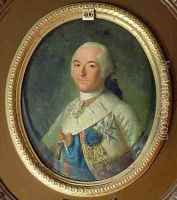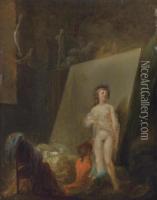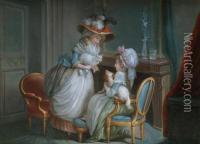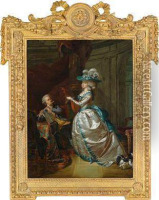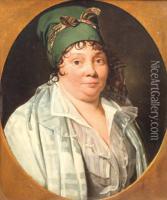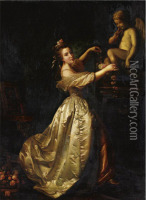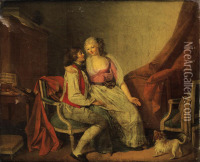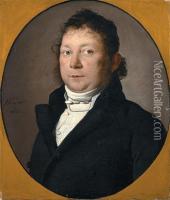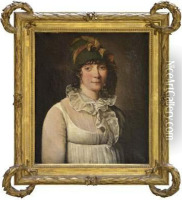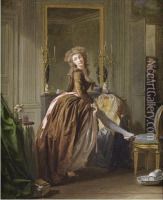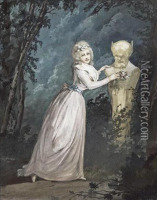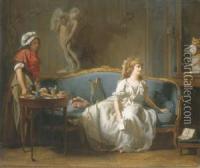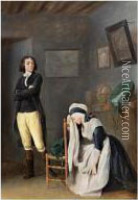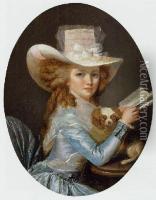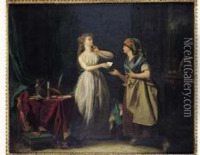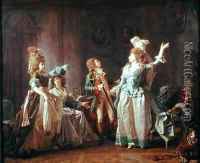Michel Garnier Paintings
Michel Garnier was a French painter who was born in Paris in 1753. He was known for his work as a Neoclassical painter, a style that came into prominence in the mid-18th century as a reaction to the Baroque and Rococo styles that preceded it. Neoclassicism sought to return to the simplicity, elegance, and symmetry characteristic of the arts of ancient Greece and Rome.
Garnier studied under the guidance of renowned artists such as Gabriel-François Doyen and Joseph-Marie Vien, who were instrumental in his development as an artist. His education was typical of the time, focusing on the principles of drawing, composition, and the study of classical antiquities and history.
During his career, Garnier developed a reputation for his historical and mythological scenes, which were characterized by their refined elegance and often contained moral or educational themes. His paintings reflected the Neoclassical ideals of clarity, order, and harmony. He exhibited his works at the Paris Salon, the official art exhibition of the Académie des Beaux-Arts in Paris, which was the premier art event in the Western world at the time.
Despite his talent and the initial success he enjoyed, Michel Garnier is not as widely recognized today as some of his contemporaries, such as Jacques-Louis David or Jean-Auguste-Dominique Ingres. Nonetheless, his contributions to French Neoclassical painting continue to be appreciated by art historians and collectors.
Garnier's career spanned the tumultuous periods of the French Revolution and the Napoleonic Wars, which had a significant impact on the arts in France. The political and social upheavals of the time influenced the themes and functions of art, with a greater emphasis on propaganda and the promotion of revolutionary ideals.
After a long career, Michel Garnier died in 1829. His works can be found in various museums and art collections, where they stand as a testament to the Neoclassical movement and the enduring appeal of classical aesthetics in European art.
